As architects and designers face the challenges of climate change and the need for sustainable design, the concept of biophilic design has emerged as a critical approach to creating healthier and more resilient buildings. Biophilic design principles are based on the idea that humans have an innate connection to nature, and incorporating natural elements and materials into the built environment can enhance our wellbeing and the performance of buildings.
Biophilic elements in resilient architecture can take many forms, from the use of natural materials and green infrastructure to the incorporation of daylight and views of the outdoors. These elements can not only improve the comfort and productivity of building occupants but also contribute to energy efficiency and the overall sustainability of the structure.
Key Takeaways:
- Biophilic design principles can enhance the wellbeing and sustainability of modern buildings.
- Nature-inspired elements like natural materials and green infrastructure can contribute to the resilience of buildings.
- The use of biophilic elements can improve energy efficiency and occupants’ wellbeing.
Understanding Biophilia in Buildings
Biophilia refers to the innate human connection to nature and living systems. Understanding this connection is essential to creating sustainable and resilient architecture that promotes human wellbeing.
Biophilic design principles are based on the idea that humans thrive in environments that incorporate natural elements, such as daylight, plants, and water. By bringing these elements into buildings, designers can create spaces that enhance occupants’ physical and emotional health, productivity, and creativity.
The Principles of Biophilic Design
There are three key principles of biophilic design:
- Direct experience of nature: This involves incorporating elements that provide a direct connection to nature, such as green walls, water features, and natural light.
- Indirect experience of nature: This principle involves incorporating nature-inspired materials, patterns, and shapes, such as wood, stone, and curved forms.
- Spatial and temporal variability: The third principle involves creating spaces that mimic the diversity and complexity of nature, such as multi-use spaces and flexible layouts.
By incorporating these principles, architects can create buildings that not only look beautiful but also enhance wellbeing and promote sustainability.
The Benefits of Biophilia in Buildings
Research has shown that incorporating biophilic elements in buildings can have a range of benefits for occupants, including:
- Reduced stress levels and improved mental health
- Increase in productivity and creativity
- Decreased sick days and improved physical health
- Improved sleep quality
Moreover, biophilic elements can also contribute to the overall sustainability and resilience of a building, by reducing energy consumption and improving indoor air quality.
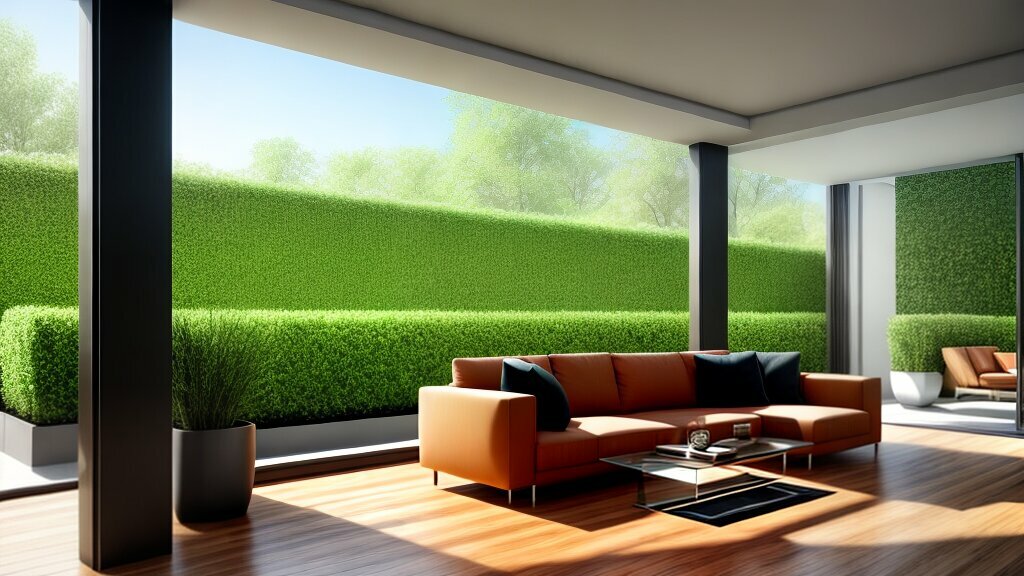
“Biophilic design can fundamentally transform the way we think about architecture, creating buildings that are not only beautiful but also support human health and well-being.”
As we continue to face unprecedented environmental challenges, architects and designers must embrace the principles of biophilic design to create buildings that are not only sustainable and resilient but also promote human health and wellbeing.
Enhancing Resilience with Biophilic Elements
Biophilic design not only enhances the aesthetic appeal of buildings but also contributes to their resilience. By incorporating nature-inspired elements into architectural design, buildings can become more sustainable and better withstand environmental changes and disasters.
Natural materials such as wood, stone and clay can be used to construct buildings that are durable and low-maintenance. These materials not only have a timeless appeal but also help regulate temperature and humidity levels, reducing the need for artificial heating and cooling systems.

Green infrastructure such as living roofs and walls can also help improve a building’s resilience. By using plants to cover roofs and walls, buildings can better absorb and store rainwater, reducing the risk of flooding and water damage. Living walls also provide insulation, reducing energy consumption and carbon emissions.
Overall, incorporating biophilic elements into building design can promote sustainability and resilience, creating healthier and more comfortable living and working spaces.
Biophilic Elements for Indoor Spaces
Bringing nature indoors is a fundamental principle of biophilic design. Natural elements such as plants, flowing water, and organic materials can improve the indoor air quality, reduce stress, boost creativity and increase productivity.
Plants and Green Walls: An indoor garden or a green wall can enhance the aesthetic appeal of a space while also providing the benefits of cleaner air and noise reduction. Studies have shown that indoor plants can reduce carbon dioxide levels, lower stress, and even increase pain tolerance. Adding plants to a workspace can boost productivity by providing a refreshing break from the computer screen, whilst also adding natural beauty and a connection to the outdoors.
| Plant Species |
Purifying Properties |
| Spider Plant |
Removes toxins such as formaldehyde and xylene from the air |
| Peace Lily |
Filters out harmful benzene and trichloroethylene |
| Bamboo Palm |
Removes pollutants such as benzene and formaldehyde and is known for its air-cleaning abilities |
Water features: A simple water feature can have a calming effect on indoor spaces. The sound of flowing water can reduce stress and boost concentration. Adding a water feature such as a small fountain or a simple aquarium can bring the natural world into indoor spaces, creating a more tranquil environment.
Natural Materials: Using organic materials such as wood, stone, and clay can bring the natural world into homes and commercial buildings. The texture and patterns of natural materials can add warmth and authenticity to indoor spaces, creating a connection to the outdoors. For example, using reclaimed wood for flooring or accents could add natural features to your indoor spaces.

The integration of biophilic elements into indoor spaces can have a positive impact on the wellbeing of building occupants. By bringing nature inside, biophilic design can improve air quality, reduce stress, increase creativity and productivity, and create a more visually appealing environment.
Biophilic Elements for Outdoor Spaces
Incorporating outdoor spaces into biophilic design provides an opportunity for occupants to connect with nature and enhances their overall wellbeing. One effective way to achieve this is by creating green roofs, which have many benefits beyond their aesthetic appeal. They provide insulation, absorb rainwater, and filter pollutants from the air. They also offer habitat for wildlife, which promotes biodiversity in the surrounding area.
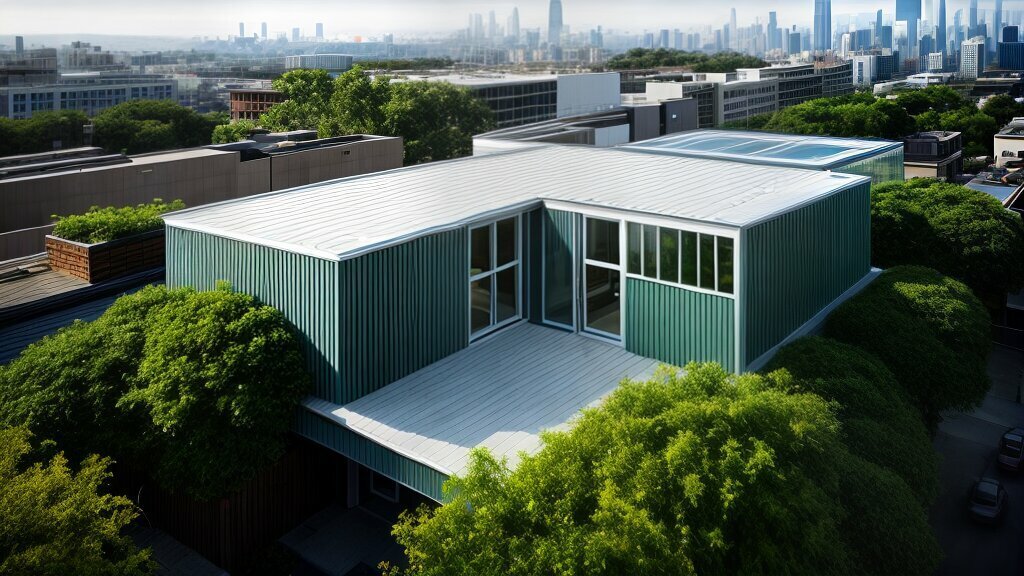
Another way to connect indoor and outdoor spaces is by creating courtyards. These secluded outdoor spaces offer a sanctuary away from the noise and distractions of everyday life. By incorporating plant life, water features, and other natural elements, they provide a peaceful and calming environment that promotes relaxation and stress reduction.
Finally, gardens are a popular way to incorporate biophilic design into outdoor spaces. They can be designed to suit any space, from small balconies to expansive grounds. Gardens provide a space for planting vegetables and herbs, which can promote sustainable living and healthy eating. They also offer a place for occupants to interact with nature and experience the beauty and tranquillity it provides.
Integrating Biodiversity into Architecture
Biodiversity is the variety of life on Earth, from plant and animal species to ecosystems and genetic diversity. Integrating biodiversity into architectural design can have a positive impact on the environment and the health of building occupants.
One way to incorporate biodiversity into buildings is by using native plants in landscaping and green roofs. These plants are adapted to the local climate and require less maintenance than non-native species. Native plants also provide habitat and food for local wildlife, promoting biodiversity in urban areas.
Creating habitats for wildlife within buildings is another way to integrate biodiversity into architectural design. For example, birdhouses and bat boxes can be installed on building exteriors to provide nesting spaces for these animals.
Biodiverse green walls can serve as a natural air filter, purifying the air and reducing harmful pollutants indoors. This natural filtration system can have a positive impact on the health and wellbeing of building occupants.
Integrating biodiversity into architecture can also promote sustainable and energy-efficient design. Vegetative roofs and walls can help insulate buildings, reducing the need for heating and cooling systems. This, in turn, reduces energy consumption and greenhouse gas emissions.
Incorporating biodiversity into architectural design not only benefits the environment but also enhances the aesthetics and functionality of buildings. By integrating natural elements, architects can create living environments that are more harmonious with nature and promote the health and wellbeing of building occupants.
Biophilic Elements for Energy Efficiency
Biophilic elements not only enhance the aesthetic appeal of buildings but also contribute to their energy efficiency. Nature-inspired architecture can reduce a building’s dependence on artificial lighting, heating, and cooling systems, which in turn reduces energy consumption and minimizes the building’s carbon footprint.
Natural lighting is a vital element in biophilic design. It not only provides a visual connection to the outdoors but also reduces the need for artificial lighting during the daytime. Additionally, it has been proven that exposure to natural light can improve the wellbeing and productivity of occupants, helping to create a healthier indoor environment.
Ventilation is another biophilic element that can improve energy efficiency and air quality. Natural ventilation systems, such as passive ventilation, stack ventilation, or wind-driven ventilation, can provide fresh air and reduce the need for mechanical ventilation systems. These systems can be combined with shading techniques inspired by nature to further enhance energy efficiency. For example, the use of exterior shading devices, such as overhangs or trellises, can reduce solar heat gain and decrease the need for air conditioning.
Green roofs are another biophilic element that can improve a building’s energy efficiency. They provide insulation, reduce the urban heat island effect, and absorb rainwater, reducing the need for mechanical cooling and stormwater management systems. Additionally, they can serve as habitats for birds and insects, contributing to the biodiversity and ecological sustainability of the building.
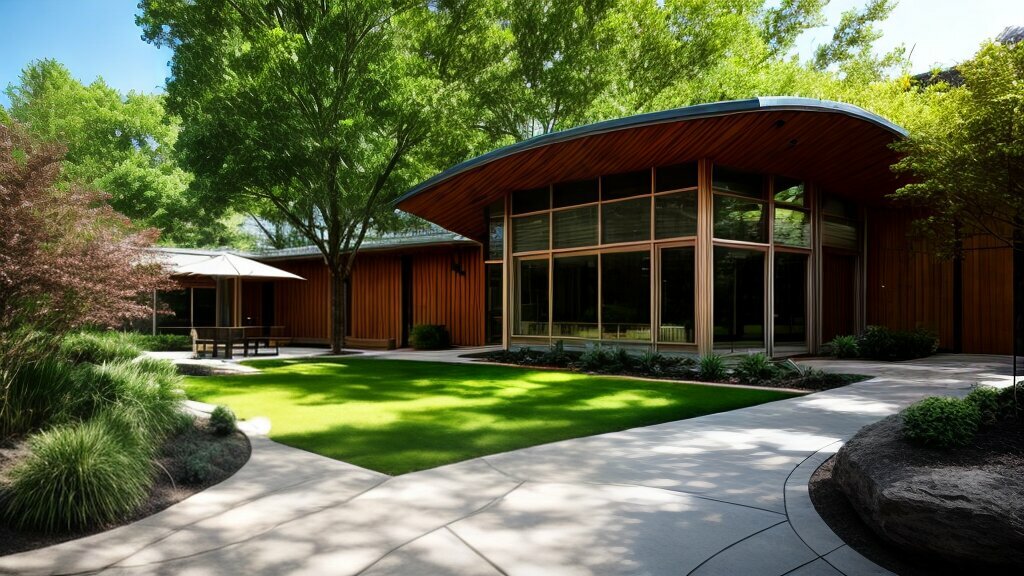
By incorporating biophilic elements that enhance energy efficiency, buildings can become more sustainable, cost-effective, and healthier for the occupants.
The Role of Biophilic Elements in Wellbeing
Biophilic design is not only beneficial for the environment but also for the wellbeing of the building’s occupants. Research has shown that incorporating nature-inspired elements can have a positive impact on mental and physical health.
Studies have found that exposure to natural light can improve sleep quality, boost mood, and reduce stress levels. Additionally, incorporating plants into indoor spaces can reduce air pollutants and increase productivity and creativity.
Another biophilic element that can benefit wellbeing is the use of natural materials. Studies have shown that being surrounded by materials such as wood and stone can reduce stress levels and improve cognitive function.
Furthermore, biophilic design can enhance the connection between people and the natural world, promoting a sense of calm and relaxation. Incorporating elements such as water features, green walls, and outdoor spaces can also encourage physical activity and social interaction, further benefiting wellbeing.
Overall, incorporating biophilic elements into architectural design can have a significant positive impact on the wellbeing of building occupants.

Conclusion
Incorporating biophilic elements into architecture not only enhances the resilience of buildings, but also contributes to the wellbeing of occupants and the sustainability of our planet. By understanding the principles of biophilic design and incorporating nature-inspired elements both indoors and outdoors, we can create healthier and more sustainable buildings that benefit both people and the environment.
Research has shown that exposure to nature in indoor and outdoor spaces can reduce stress, increase creativity, and improve cognitive function. Similarly, the use of natural materials and green infrastructure can contribute to energy efficiency and promote biodiversity in urban environments.
Overall, biophilic design is an essential component of resilient architecture. As the world continues to face challenges such as climate change and urbanization, it is important to prioritize sustainability and the wellbeing of our communities through the use of nature-inspired design principles. By doing so, we can create buildings that not only withstand the test of time, but also contribute to a healthier, happier, and more sustainable future.
FAQ
Q: What is biophilic design?
A: Biophilic design is an architectural approach that incorporates natural elements and patterns into the built environment. It aims to create spaces that reconnect people with nature, enhancing their wellbeing and promoting sustainability.
Q: Why is biophilic design important in resilient architecture?
A: Biophilic design is important in resilient architecture because it helps create buildings that can withstand and adapt to changing environmental conditions. By incorporating nature-inspired elements, such as natural materials and green infrastructure, buildings become more sustainable and better able to withstand the impacts of climate change.
Q: What are the principles of biophilic design?
A: The principles of biophilic design include incorporating natural materials, maximizing exposure to natural light, creating views of nature, incorporating plants and greenery, and providing opportunities for outdoor connection. These principles help create environments that are more conducive to human health and wellbeing.
Q: How can biophilic elements enhance indoor spaces?
A: Biophilic elements such as plants, natural materials, and views of nature can enhance indoor spaces by improving air quality, reducing stress, increasing productivity, and promoting overall wellbeing. They help create a connection to nature even in indoor environments.
Q: What are some examples of biophilic elements for outdoor spaces?
A: Examples of biophilic elements for outdoor spaces include green roofs, gardens, courtyards, and natural water features. These elements help create a seamless indoor-outdoor connection and provide opportunities for people to connect with nature and experience its benefits.
Q: How can biodiversity be integrated into architecture?
A: Biodiversity can be integrated into architecture by incorporating native plants, creating habitats for wildlife, and using sustainable building materials. This helps create environments that support local ecosystems, promote biodiversity, and contribute to the overall resilience of the built environment.
Q: How do biophilic elements contribute to energy efficiency?
A: Biophilic elements such as natural lighting, ventilation, and shading techniques inspired by nature can contribute to energy efficiency in buildings. By utilizing these elements, buildings can reduce the need for artificial lighting and cooling systems, thereby reducing energy consumption and decreasing environmental impact.
Q: What is the role of biophilic elements in wellbeing?
A: Biophilic elements have a positive impact on occupants’ wellbeing by creating environments that reduce stress, improve cognitive performance, and enhance overall mental and physical health. Studies have shown that exposure to nature-inspired design elements can lead to improved productivity, increased creativity, and better overall quality of life.
Q: What is the conclusion of biophilic design in resilient architecture?
A: Biophilic design plays a crucial role in creating resilient and sustainable buildings. By incorporating nature-inspired elements, buildings can enhance the wellbeing of occupants, promote biodiversity, improve energy efficiency, and create spaces that are better equipped to withstand the challenges of a changing climate. Biophilic design offers immense potential for creating healthier and more sustainable built environments.






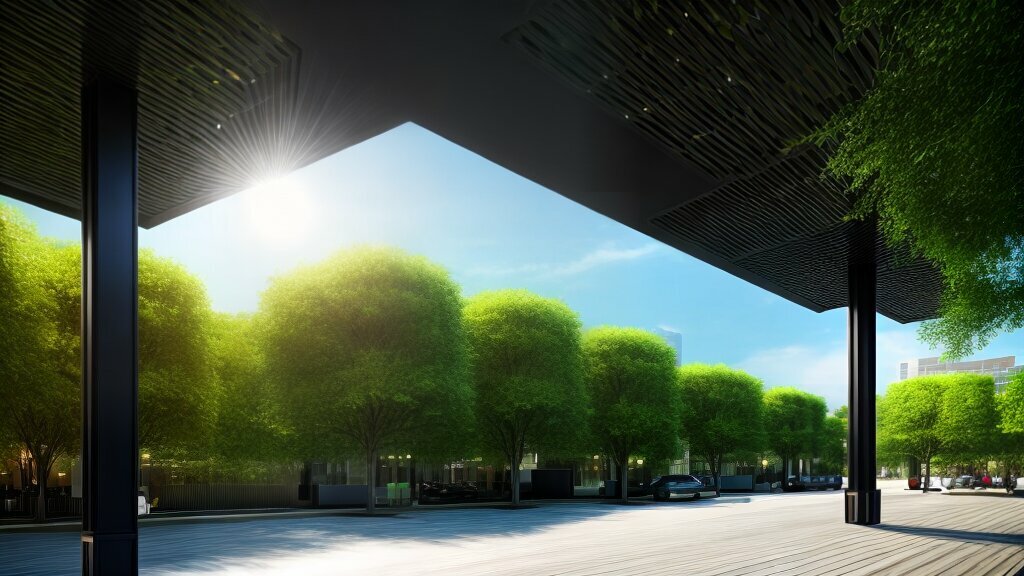




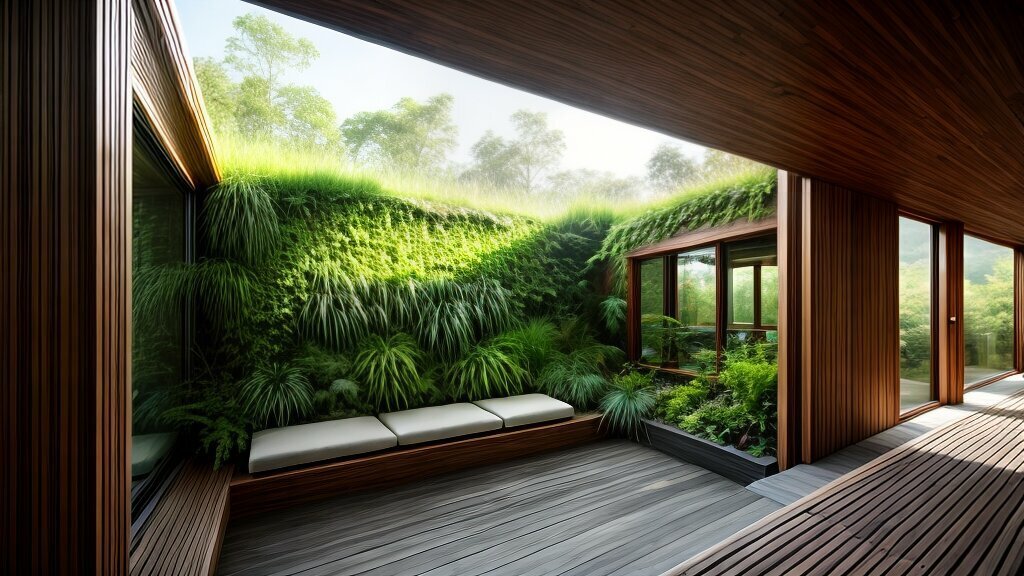


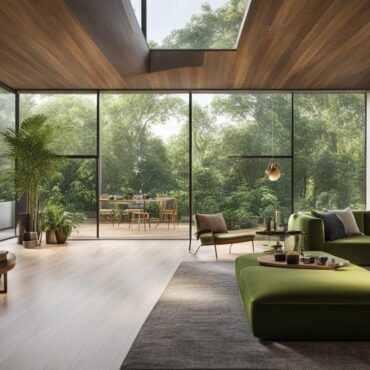
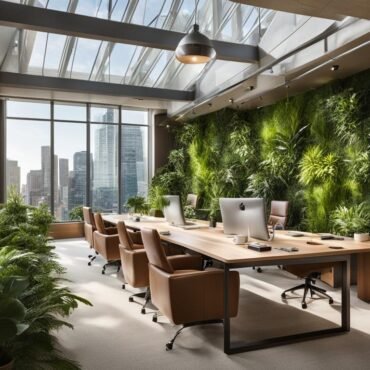









Post comments (0)